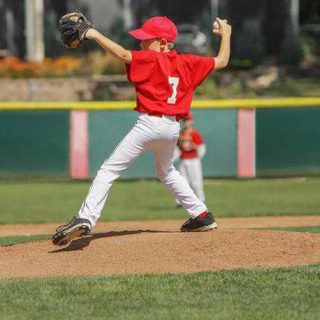How to Avoid Orthopedic- and Sports-Related Overuse Injuries
Practice makes perfect, or so the saying goes. However, too much practice or competition with repetitive motions can keep you off the field. Although injuries from repetitive motion can also occur in the workplace, the most dramatic increase in overuse injuries is among young athletes. Every year, 3.5 million children under the age of 14 are treated for sports injuries, half of which are because of overuse.
Involvement in sports is generally a good thing for kids: They learn to deal with others as a team; they learn to process the emotions of winning (and losing); and they are introduced to a lifelong habit of exercise. Through this activity, their muscles, tendons, ligaments, and bones get stronger and mature through a process called remodeling.
Playing a single sport too hard and too long without a break, however, can result in excessive stress on those same developing body parts. If the activity causes a breakdown faster than the body can rebuild and strengthen the tissue, an overuse injury is the result.
Who’s at Risk?
Some of the most common athletes suffering from these injuries are youth baseball players, particularly pitchers. Athletes in other sports — basketball, soccer, racket sports, volleyball, swimming, and even cheerleading — can suffer from strains and sprains. Young athletes who train like professionals from as young as age 6, such as tennis players, may even develop career-hindering injuries before they get close to the top level.
Types of Overuse Injuries
All parts of the body can be affected, especially shoulders, elbows, hips, thighs, abdomen, ankles, and shins. Damage to young baseball players is so common that these injuries have their own names, such as little league shoulder. Other sports injuries also have special names, such as tennis elbow and jumper’s knee.
An orthopedic specialist should see any patient with pain that doesn’t go away. Medication, physical therapy, and adjusted training routines are usually tried before any surgical treatment is suggested.
Tips on Preventing Overuse
Although these orthopedic injuries are increasingly common, they’re also preventable. Keep in mind the following tips when it comes to practice and training:
- Don’t play through the pain. Kids avidly observe professional athletes and their “no pain, no gain” attitude, which is all the more reason for coaches and parents to be very watchful. At the first sign of pain or diminished performance, take the young player out to rest.
- Many injuries occur slowly over time. Keep an eye on your family’s athletes for winces, limps, and grimaces that may indicate an increasing orthopedic issue.
- Young athletes should avoid specializing in one sport until they’re seniors in high school. Specializing means you’re stressing the same joints, bones, and muscles every time you play. Studies show that young people who participate in different sports play longer at higher levels with fewer injuries than those who specialize in one sport before puberty.
- Don’t play sports more than five days a week.
- Warm up and stretch before any athletic activity.
- Alternate hard and easy workouts.
- When you’re training, use the 10 percent rule: Never accelerate your training, reps, weight, or distance by more than 10 percent per week. This gives your body time to adjust and recover.
- Young baseball pitchers have their own recommendations.
Remember, sports are meant to be fun, and they offer many teachable moments. We should enjoy them — and let our children do the same — but also take care to avoid being sidelined by an overuse orthopedic injury.


